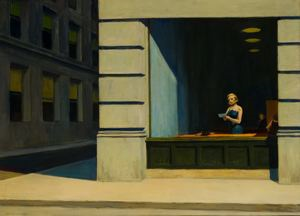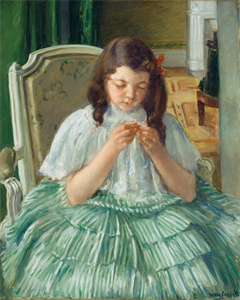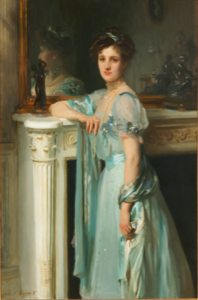New York Office
| Showing 1 of 1 |
|

Edward Hopper
American, 1882–1967
"New York Office" was painted when Hopper was eighty years old, and very near the end of his life. But the subject of the painting had occupied the artist since virtually the beginning of his career, combining three major themes he revisited regularly in his art: urban environment, the business office, and a solitary figure viewed through a window from the outside. It was Hopper's practice to travel the city on foot or by public transportation, and produce drawings based upon what he saw during these excursions. These drawings were the “raw material” from which he formulated finished paintings in his studio—choosing, editing, and revising the drawings to make the composition as he envisioned it. Here, the viewer is placed across the street and outside the office window, in a sense forcing him into the same position as the artist, a voyeur whose presence is unnoticed by the subject.
Pensive, solitary figures such as the woman in the office window were frequently depicted in Hopper’s later oil paintings, and they are usually incorporated with effects of light to reveal their physical presence. Since they are unaware of the viewer’s presence, they are powerless against visual intrusion on their privacy. Hopper implies that there is a story behind these women’s lives that remains intriguing, but elusive, and that, as appealing as the women appear, they exist in the realm of the imaginary and unattainable.
American Paintings from the Montgomery Museum of Fine Arts, 2006, cat. no. 63, p. 158.
American, 1882–1967
New York Office
1962
Object Type:
Painting
Creation Place:
North America, American, New York
Dimensions:
40 1/2 in. x 55 1/8 in. (102.87 cm x 140.02 cm)
Medium and Support:
Oil on canvas
Accession Number:
1989.0002.0024
Credit Line:
Montgomery Museum of Fine Arts, Montgomery, Alabama, The Blount Collection
Currently On View
Copyright:
© Heirs of Josephine N. Hopper/ Licensed by Artists Rights Society (ARS), NY
"New York Office" was painted when Hopper was eighty years old, and very near the end of his life. But the subject of the painting had occupied the artist since virtually the beginning of his career, combining three major themes he revisited regularly in his art: urban environment, the business office, and a solitary figure viewed through a window from the outside. It was Hopper's practice to travel the city on foot or by public transportation, and produce drawings based upon what he saw during these excursions. These drawings were the “raw material” from which he formulated finished paintings in his studio—choosing, editing, and revising the drawings to make the composition as he envisioned it. Here, the viewer is placed across the street and outside the office window, in a sense forcing him into the same position as the artist, a voyeur whose presence is unnoticed by the subject.
Pensive, solitary figures such as the woman in the office window were frequently depicted in Hopper’s later oil paintings, and they are usually incorporated with effects of light to reveal their physical presence. Since they are unaware of the viewer’s presence, they are powerless against visual intrusion on their privacy. Hopper implies that there is a story behind these women’s lives that remains intriguing, but elusive, and that, as appealing as the women appear, they exist in the realm of the imaginary and unattainable.
American Paintings from the Montgomery Museum of Fine Arts, 2006, cat. no. 63, p. 158.
Keywords
Click a term to view the records with the same keyword
Portfolio List
Click a portfolio name to view all the objects in that portfolio
This object is a member of the following portfolios:
Your current search criteria is: Object is "New York Office".

